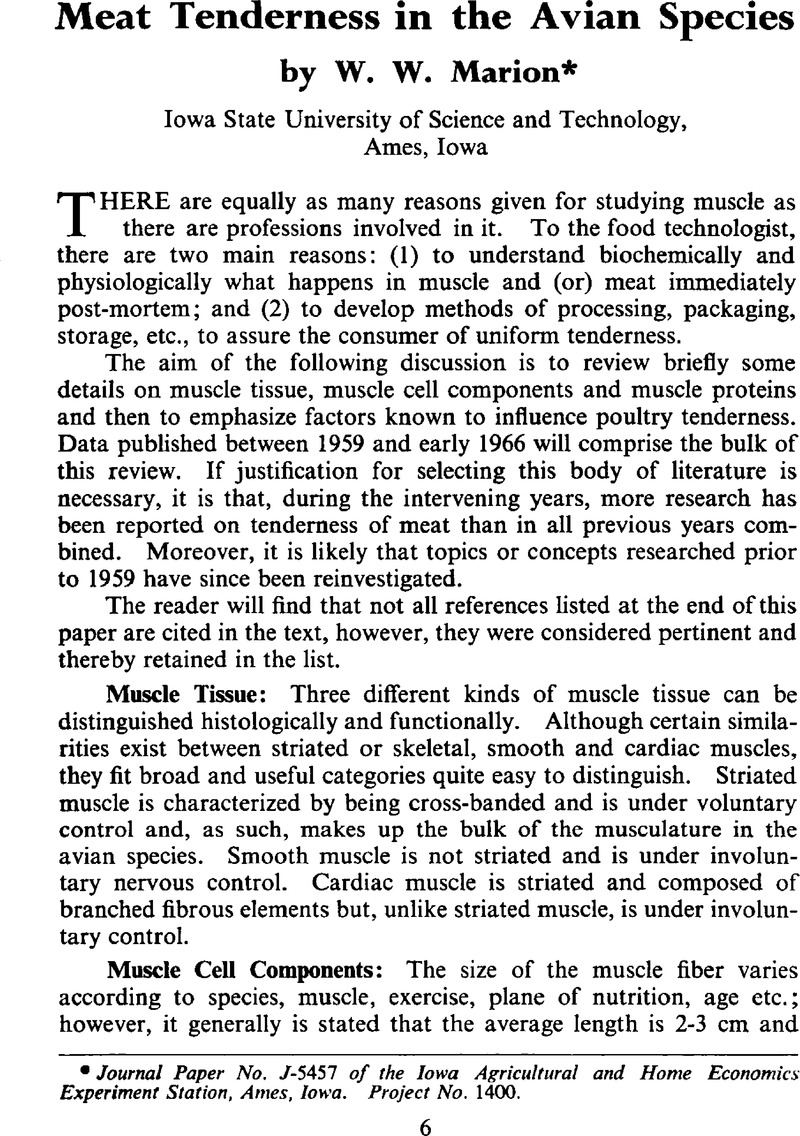Crossref Citations
This article has been cited by the following publications. This list is generated based on data provided by Crossref.
Dawson, L. E.
and
Garner, R. G.
1969.
Co-operative State Research on Poultry Products in the United States.
World's Poultry Science Journal,
Vol. 25,
Issue. 1,
p.
15.
Treat, D.W.
and
Goodwin, T.L.
1973.
Effects of Sex, Size and Time of Cutting on Processing Yields and Tenderness of Broilers.
Poultry Science,
Vol. 52,
Issue. 4,
p.
1348.
Vanderstoep, J.
and
Richards, J.F.
1974.
Post-Mortem Glycolytic and Physical Changes in Turkey Breast Muscle.
Canadian Institute of Food Science and Technology Journal,
Vol. 7,
Issue. 2,
p.
120.
SIDHU, G. S.
MONTGOMERY, W. A.
and
BROWN, M. A.
1974.
Post mortem changes and spoilage in rock lobster muscle.
International Journal of Food Science & Technology,
Vol. 9,
Issue. 3,
p.
357.
LYON, C.E.
LYON, B.G.
HAMM, D.
and
THOMSON, J.E.
1984.
The Effects of Postmortem Holding and Salt Addition on the Cooked Yield and Texture of Broiler Meat Patties.
Poultry Science,
Vol. 63,
Issue. 3,
p.
502.
Huezo, R.
Northcutt, J.K.
Smith, D.P.
and
Fletcher, D.L.
2007.
Effect of Chilling Method and Deboning Time on Broiler Breast Fillet Quality.
Journal of Applied Poultry Research,
Vol. 16,
Issue. 4,
p.
537.



